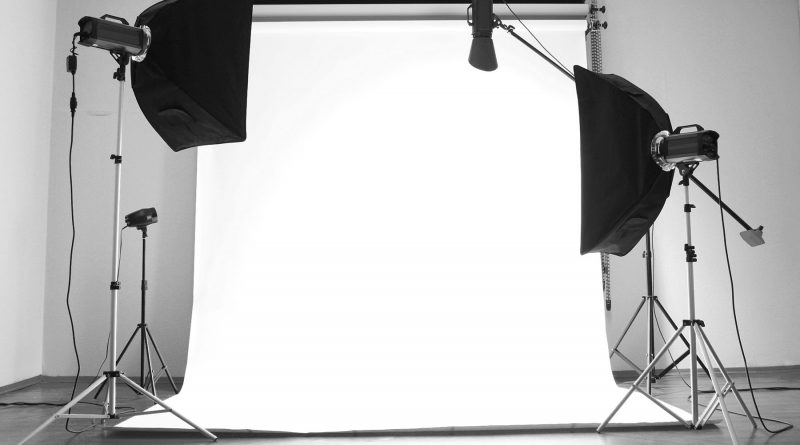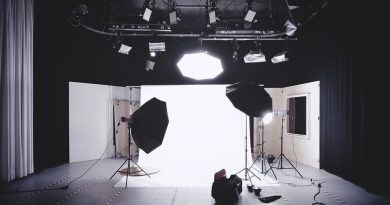Getting the Best Results from a Photographer
My uncle was a professional product photographer. Not high-fashion or glamour. He specialized in commercial products – photographing products for catalogs, brochures, and online stores. He always said that a professional photographer faces two problems – the client and the product. A good client showed up prepared to get the job done quickly and efficiently. A good client came with a list of the technical requirements. A good client freed him to focus on getting the best photos. These clients get the best results for the lowest cost because they act professionally. How can you work with your photographer efficiently?
- Bring example photos of the style and look of the finished shots
- Email a list of shots you want taken prior to your scheduled session
- Let the photographer exercise creativity
- Arrive with all of your products (including accessories) ready for staging
- If you have specific poses or clothing combinations, have a list ready
- Use a checklist and clapboard
- Stay within the scheduled time – show up on time, work quickly, and leave on time
Let’s dive into this list in greater detail.
Style, Vibe, or Feel
You may want an “edgy” vibe for your inline skating gear. Or you want a relaxed, outdoorsy feel for your camping equipment. Maybe you want an upscale, sophisticated style for your gourmet coffee selections. The best online stores align product presentation with their target Buyer. Styles need examples. Don’t just show up with a pile of photos you’ve downloaded. Organize your examples and more importantly, label the elements in each image that captures the look you want to achieve. It could be the high contrast, bright, oversaturated colors that say “edgy”. Or, a spare, lean, minimalist composition that speaks sophisticated tastes. Or deep, soft, shadows that reinforce the romantic mystery your products exude. Style is subtle. Style is subjective. Communicating style clearly challenges us all. Use pictures, websites, and sketches to articulate your style. The more clearly you can express your style, the better the photographer can capture the results you want.
Technical Requirements
If you have specific technical requirements, get those on paper. For example, if you sell through Amazon, eBay, or Etsy – each marketplace has their own photo guidelines (or requirements). If the photo must be 1024×1024 (image size in pixels) with pure white backgrounds then you must let the photographer know. If the photo must be square or a specific aspect ratio (height vs length), make sure you have that listed. If you need a specific image or video format (e.g. PNG, JPG, or MP4) have that info ready. We will discuss image file types in a separate post.
Professional photographers use color and grey scale reference cards. These are standard cards that she places in the shot so you can quickly adjust the colors in the final image to the “true” colors (and lighting) based on the reference cards. Sometimes these cards are only used for the initial shot to calibrate the camera and lighting. We’ve found, from experience, especially if you are going to perform some of the “post” work yourself, that you should have them in every shot. Unlike high-fashion photography, where only one final image is used, product photos will often show the same item from different perspectives. You want the easiest way to make sure the colors are consistent between all of the images using the color reference cards instead of having to eyeball them on your monitor. We will post a separate article on how to use reference cards.
What Shots
We ask our photographer to take head on, disassembled parts, and 45 degree side views for all products. This means we have a standard set of four shots for each product. If the product has a face, we ask for close-ups of the head from the same angles (another three shots). For new products, we are also taking photos suitable for 360 (turntable) views (usually between 36-72 photos per rotation depending on the product). Then we ask the photographer to take between 5 and 10 (depending on the product) creative shots. This means we have a consistent set of photos while also allowing the photographer to exercise his or her creativity. Most of the time required to take photos comes from the setup and take down of the product. To save money, get all the photos you anticipate needing in one session. Even if you don’t use them all now, it may save you time and money later as you will avoid the setup and takedown time of another session.
Allow for Creativity
While many of the images we ask our photographer to provide are the same, we also tap in to her creativity. Our current photographer also does fashion work so she is familiar with the current trends. Since most of the time and cost for photography is in the setup, changing, and take down of the products, ask the photographer to take some additional photos exercising his or her creativity. This could be different angles or a change in lighting to achieve a more dramatic look. Why hire a professional if you don’t tap into their experience? Budget for experimentation – you may discover a best seller!
Bring Everything!
What will quickly strike you is how little time the photographer is actually taking photos. Most of the time will be staging the product, adjusting the lighting, and performing small tweaks to the setup. Snap…photo done. While the photographer is taking photos of the first model (or mannequin) get the second one prepared. Once the second model (or mannequin) is “at bat”, get the next one ready. Bring extras just in case you magically get ahead of schedule! Again, most of the time is in the setup and take down. Taking the actual photos, once everything is ready, takes seconds. Keep the action moving!
Checklist and Clapboard
Before you start your session, review your checklist of photos you want taken. Did you need a photo of the grey toolbelt with the bright red jersey and also the same toolbelt but with a bright yellow jersey? Expensive mistakes occur when you need to return to the studio because you forgot to take specific shots that you needed. Avoid that costly error by making and using a checklist. You can always edit your list but without it, you’re likely to miss something.
Also, a single photo session can generate literally a thousand or more images. How do you swiftly locate the model XYZ shots? A clapboard (or clapper, clacker, slate, or clapperboard) is just an object that lists the session, the scene, and the product. The first photo in a each set will have the clapboard inserted (part of the photo) so you can easily identify the product.
Watch the Clock
You may not get everything accomplished on your checklist. If you keep track of the time as you go, you can better estimate the time required for the next session. Making each session a marathon often results in mistakes due to fatigue. Arrive on time, be prepared, work efficiently, and leave on schedule. Professionals like working with other professionals. You’ll find it easier to negotiate rates if you one of the “good” clients!
Masked vs Unmasked Photos
Depending on the cost, you may want the photographer to “mask” the photos. Masking is the process of removing the background so that it can be replaced with a different background. This allows you to change the image at a later time to replace the standard background with a different one or to combine multiple photos in a single image. You can mask the images yourself, but it takes time and effort to perform this task. Your photographer will normally have special software that quickly masks the photos. While you are negotiating fees with the photographer, ask about the additional cost for masking all of the photos. Preview the photos before agreeing to mask them all as you may not want to use all of them so you don’t want to pay for them.
Get the finished product
In some cases, the photographer may also perform “post” work. This includes editing or touch-ups on the photos before they are ready for you, the Customer. If no additional work is necessary, then get your images (in both RAW and JPG/JPEG formats – we’ll explain later). You may receive the photos on CD/DVD, a USB thumb drive, or the micro card used in the camera. When you get back to your office, make a backup of those photos immediately! Don’t learn the hard way about why you always want a backup.
Using a professional photographer can be money well spent. You can observe how a professional works, what types of equipment they use (and how they use them), and use them as a sounding board for how best to display your products. With a professional, you can quickly complete the most important step of selling online – getting quality photos.


